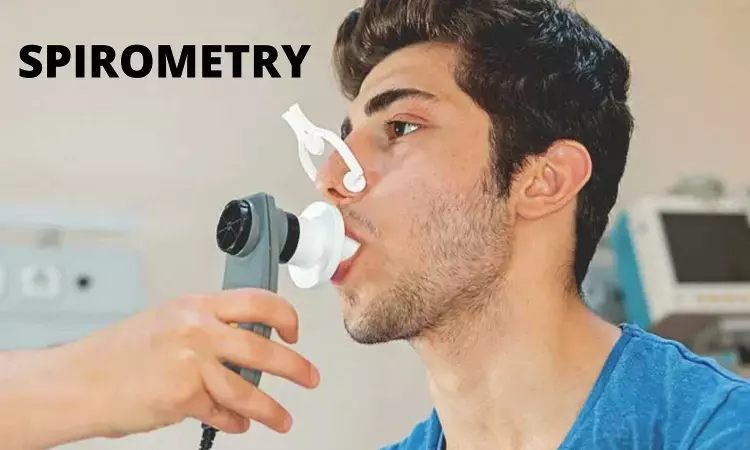- Home
- Medical news & Guidelines
- Anesthesiology
- Cardiology and CTVS
- Critical Care
- Dentistry
- Dermatology
- Diabetes and Endocrinology
- ENT
- Gastroenterology
- Medicine
- Nephrology
- Neurology
- Obstretics-Gynaecology
- Oncology
- Ophthalmology
- Orthopaedics
- Pediatrics-Neonatology
- Psychiatry
- Pulmonology
- Radiology
- Surgery
- Urology
- Laboratory Medicine
- Diet
- Nursing
- Paramedical
- Physiotherapy
- Health news
- Fact Check
- Bone Health Fact Check
- Brain Health Fact Check
- Cancer Related Fact Check
- Child Care Fact Check
- Dental and oral health fact check
- Diabetes and metabolic health fact check
- Diet and Nutrition Fact Check
- Eye and ENT Care Fact Check
- Fitness fact check
- Gut health fact check
- Heart health fact check
- Kidney health fact check
- Medical education fact check
- Men's health fact check
- Respiratory fact check
- Skin and hair care fact check
- Vaccine and Immunization fact check
- Women's health fact check
- AYUSH
- State News
- Andaman and Nicobar Islands
- Andhra Pradesh
- Arunachal Pradesh
- Assam
- Bihar
- Chandigarh
- Chattisgarh
- Dadra and Nagar Haveli
- Daman and Diu
- Delhi
- Goa
- Gujarat
- Haryana
- Himachal Pradesh
- Jammu & Kashmir
- Jharkhand
- Karnataka
- Kerala
- Ladakh
- Lakshadweep
- Madhya Pradesh
- Maharashtra
- Manipur
- Meghalaya
- Mizoram
- Nagaland
- Odisha
- Puducherry
- Punjab
- Rajasthan
- Sikkim
- Tamil Nadu
- Telangana
- Tripura
- Uttar Pradesh
- Uttrakhand
- West Bengal
- Medical Education
- Industry
Obstructive and restrictive spirometry patterns associated with late-life heart failure risk: JAHA

USA: Among patients with no pre-existing heart failure or pulmonary disease, both obstructive and restrictive spirometry patterns are associated with elevated pulmonary pressures, higher NT-proBNP levels, and an overall increased risk of incident heart failure, particularly in late life, reports ARIC study.
The findings, published in the Journal of the American Heart Association highlight the importance of pulmonary dysfunction with cardiac dysfunction interactions and the differential associations of obstructive and restrictive spirometric deficits with the risk of HF and particularly HFpEF in late life.
Subclinical impairments in lung function detected by spirometry are associated with alterations in cardiac structure and function and cardiovascular events in early adulthood and midlife. Spirometry measures the rate at which the lung changes volume during forced breathing maneuvers. Previous studies showed that subclinical lung function impairment is related to a measurable reduction of left ventricular filling and cardiac output in the general population. Pulmonary and cardiac functions decline with age, but the extent to which subclinical lung‐heart interactions previously described in early life and midlife extend into late life is not known.
Sergio H., University of Brasilia, Brazil, and colleagues conducted a study to determine the associations of percent predicted forced vital capacity (ppFVC) and the ratio of forced expired volume in 1 second (FEV1) to forced vital capacity (FVC; FEV1/FVC) with cardiac function and incident HF with preserved or reduced ejection fraction in late life.
Researchers enrolled 3854 participants (Mean age 75±5 years), with no pre-existing heart failure for the present study, who underwent echocardiography and spirometry at the fifth study visit. Associations of FEV1/FVC and ppFVC with echocardiographic measures, cardiac biomarkers, and risk of HF, HF with preserved ejection fraction (HFpEF), and HF with reduced ejection fraction(HFrEF) were assessed.
Key findings of the study,
• Lower FEV1/FVC and ppFVC were associated with higher NT‐proBNP (N‐terminal pro‐B‐type natriuretic peptide; both P<0.001) and pulmonary artery pressure.
• Lower ppFVC was associated with higher left ventricular mass, left ventricular filling pressure, and high‐sensitivity C‐reactive protein.
• Lower FEV1/FVC was associated with a trend toward a higher risk of incident HFpEF (HR- 1.31) and HFrEF (HR -, 1.24), but these associations did not reach statistical significance.
• Lower ppFVC was associated with incident HFpEF (HR - 1.21) but not with HFrEF (HR - 0.90).
The authors conclude that subclinical lung dysfunction in late life may help to identify older adults at increased risk of HF beyond traditional risk factors. The restrictive spirometric pattern in particular is associated with diastolic dysfunction and heightened risk of incident HFpEF, the most prevalent HF type in late life.
Prospective studies are needed to assess whether pulmonary dysfunction represents a modifiable risk factor for HF and whether interventions targeting pulmonary dysfunction would help decrease the risk of HF, and HFpEF in particular, in older adults.
Reference:
Sergio H. R. Ramalho, Brian L. Claggett, George R. WashkoJr, Raul San Jose Estepar, Patricia P. Chang, Dalane W. Kitzman, Gerson Cipriano Junior, Scott D. Solomon, Hicham Skali and Amil M. Shah. Originally published 5 Jul 2022. https://doi.org/10.1161/JAHA.121.023990. Journal of the American Heart Association. 2022;0:e023990.
BDS
Dr. Hiral patel (BDS) has completed BDS from Gujarat University, Baroda. She has worked in private dental steup for 8years and is currently a consulting general dentist in mumbai. She has recently completed her advanced PG diploma in clinical research and pharmacovigilance. She is passionate about writing and loves to read, analyses and write informative medical content for readers. She can be contacted at editorial@medicaldialogues.in.
Dr Kamal Kant Kohli-MBBS, DTCD- a chest specialist with more than 30 years of practice and a flair for writing clinical articles, Dr Kamal Kant Kohli joined Medical Dialogues as a Chief Editor of Medical News. Besides writing articles, as an editor, he proofreads and verifies all the medical content published on Medical Dialogues including those coming from journals, studies,medical conferences,guidelines etc. Email: drkohli@medicaldialogues.in. Contact no. 011-43720751


